Have you ever wondered what the biggest churches in the world are? As you travel around the globe, some of the most impressive structures you’ll encounter are places of worship. Massive cathedrals and stunning basilicas dominate city skylines with their architectural grandeur.
While Europe is home to many of the largest churches, you’ll find enormous houses of worship on every continent. Get ready to be awed by some of the biggest churches in the world.
Top 10 Biggest Churches in the World
A structure used for open Christian worship is called a church. It can also be used to describe a Christian meeting. We conducted our own research and learned that various factors, including size, volume, and capacity, can be used to determine which churches are the largest in the world. According to Wikipedia, these are the 10 biggest churches in the world.
Peter’s Basilica in Vatican City
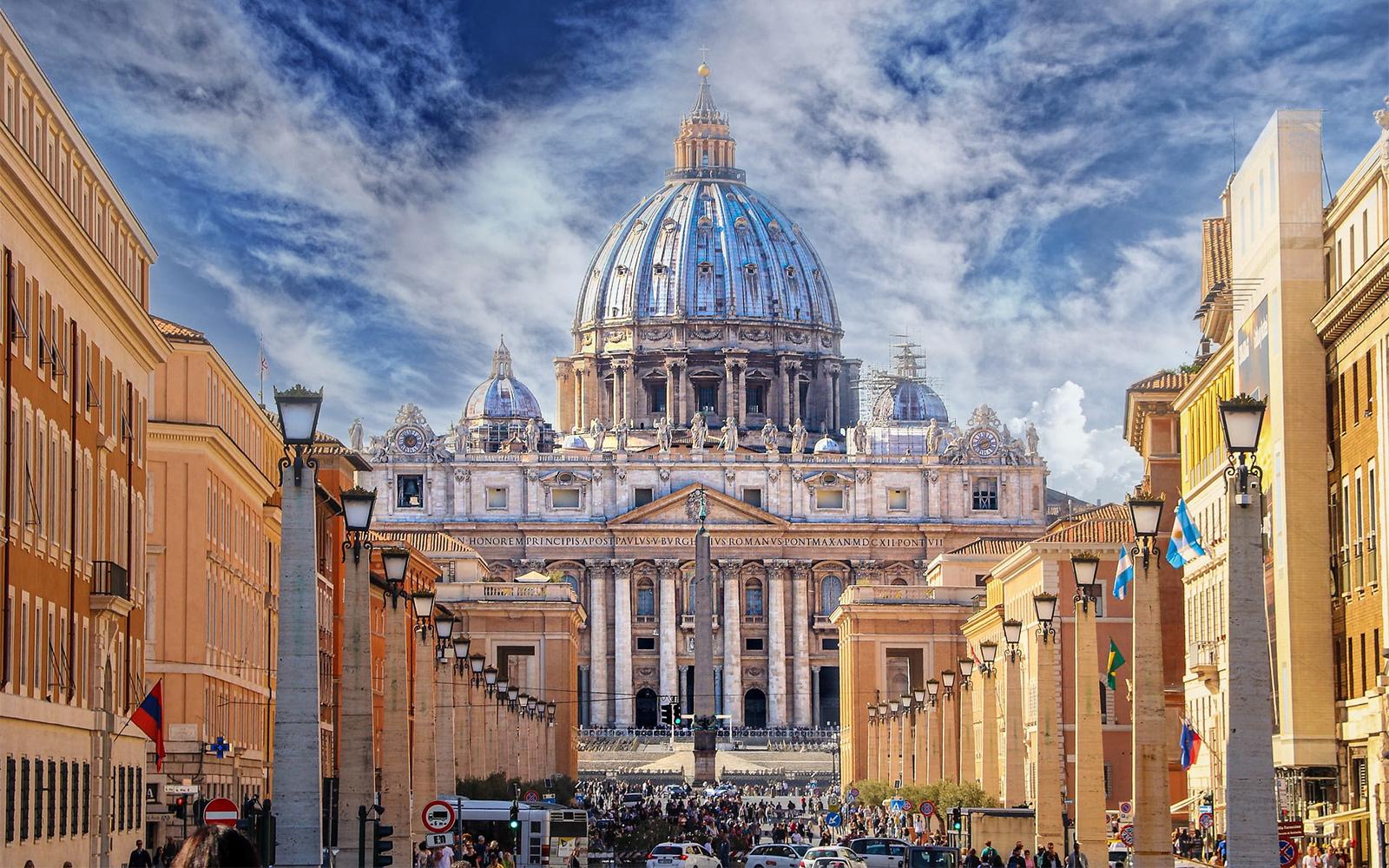
In the 4th century, Emperor Constantine made the decision to construct a basilica over the apostle’s grave. This is when the History of St. Peter’s Basilica started. The basilica’s building process was finished in 329. The church served as a covered cemetery, a banquet hall for funerals, and a place to celebrate the cult. The principal pilgrimage destination in the West throughout the High Middle Ages was there. We can get a sense of what the first Vatican basilica was like thanks to archaeological digs that were done beneath the current basilica, descriptions, drawings, and old paintings.
St. Peter’s Basilica in Vatican City is the largest church in the world. Julius II commissioned Donato Bramante to design a new basilica to replace the old one, and work on it began in 1506. Bramante suggests a plant with a Greek cross (four equal arms), similar to those found in 9th-century Byzantine cathedrals. Rafael Sanzio received the writings after Bramante’s death in 1514, and numerous ideas were explored until 1521. After Rafael’s death in 1520, work on the basilica was continued by Antonio da Sangallo the Younger, who completed the building in 1538.
After Antonio da Sangallo died in 1546, Michelangelo Buonarroti was chosen as the architect to complete the design. He simplified the structure by removing the sacristies with towers that Bramante had built at the corners of the square, and this changed the area’s outer boundaries into a continuous surrounding wall that gave the building’s volume coherence and unity. Since the central notion of Michelangelo’s design was the construction of a massive canted dome on a huge drum that would raise significantly more than Bramante’s first suggestion, the structure was strengthened.
Domingo Fontana and Jacopo della Porta finished building it 24 years after he passed away. The latter was in charge of completing Michelangelo’s project and, at the time of his death in 1602, had completed just the facade and the square’s plan. Pope Paul V made the decision to expand the church to the front, working with architect Carlo Maderno to change Bramante’s Greek cross plant into a Latin cross, which is customary in Western churches.
Maderno extends the front arm’s vault by adding a sequence of chapels with oval-domed roofs on either side. Outside, he continued Michelangelo’s wall design, which highlighted the front with large connected columns. Between 1607 and 1612, the front was constructed.
Juan Lorenzo Bernini was commissioned in 1624 to build the canopy that serves as the main altar and is traditionally supposed to be situated in the middle of the cross on the tomb of the Apostle Peter. He finished the project in 1633. Since Maderno’s passing in 1629, Bernini has been in charge of decorating the interior of the entire church, giving it its current aspect.
This iconic church is the center of the Catholic faith and a masterpiece of Renaissance architecture. Michelangelo, who designed its famous dome, and Bernini, who created the basilica’s columns, are just two of the renowned artists who contributed to its grandeur. Peter’s Basilica is a structure with a 218-meter length and a 136-meter height, including the dome. It is 23,000 square meters in size.
When you enter the basilica, you’ll be awestruck by its size and opulence. Priceless works of art, like Michelangelo’s Pietà, adorn the basilica. Climb the dome for panoramic views of Vatican City and Rome.
No trip to Vatican City is complete without visiting this magnificent basilica. Its historical and cultural significance, combined with artistic beauty, make St. Peter’s a must-see when in Rome. Awe, at its grandeur, reflect on your faith, or just admire a true masterpiece of Renaissance architecture. However you experience it, St. Peter’s Basilica will leave a lasting impression.
Cathedral Basilica of Our Lady Aparecida
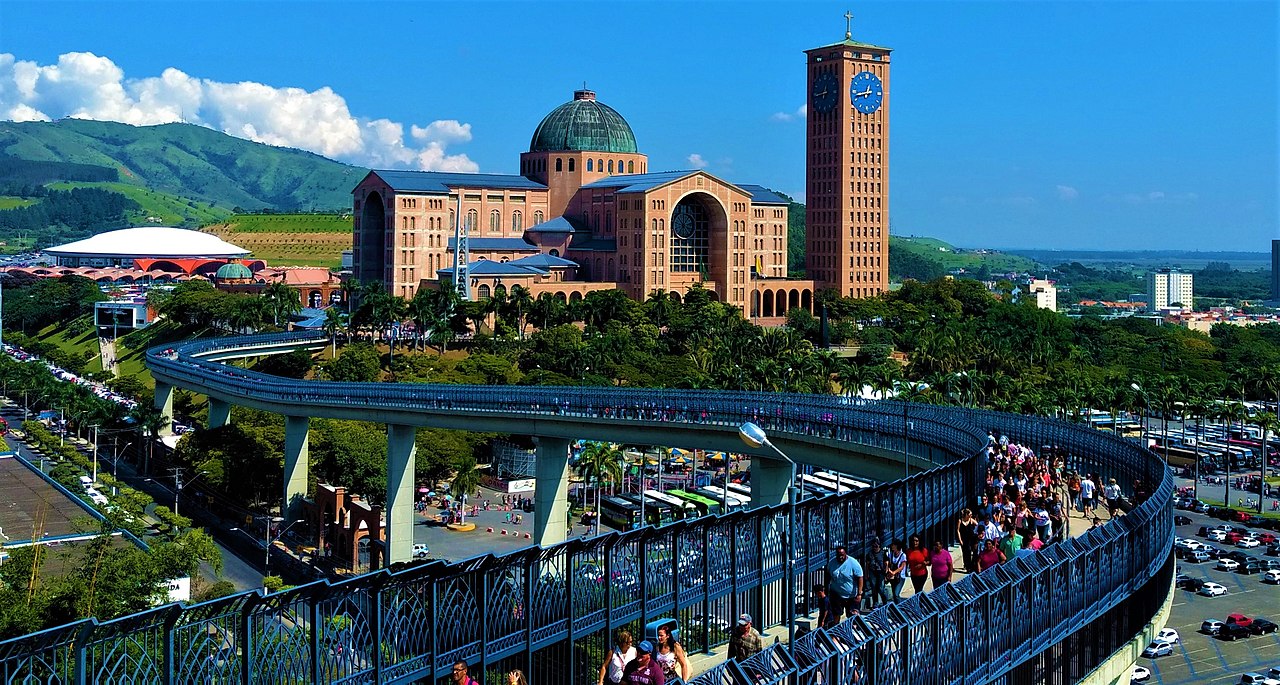
The Cathedral Basilica of Our Lady Aparecida is located in Aparecida, São Paulo, Brazil. This massive cathedral was built between 1955 and 1980. The building, which is in the Romanesque Revival style, is shaped like a Greek Cross and has arms that are 183 meters (600 feet) wide and 188 meters (617 feet) long. The tower rises to a height of 109 m (358 ft), while the dome is 70 m (230 ft) tall.
There are 23,226 m2 (250,000 sq ft) of space in the basilica.100 100,000 people can fit in the main church, and 100,000 more can attend exterior events. There are restaurants, a medical facility, a shopping mall, and a parking lot totaling 272,000 square meters (2,930,000 square feet) that has space for 6,000 cars and 4,000 buses.
Tradition has it that three fishermen were trying to catch a lot of fish in the Paraba River in 1717 for a dinner marking the visit of Governor Pedro de Almeida from So Paulo. Their efforts, despite their prayers, were unsuccessful until late in the day, when one of the fishermen cast his net and pulled it back to discover the Virgin Mary statue. He discovered the head with his following cast. When they got back to their assignment, they discovered that their luck had changed, and they had been successful in getting all the fish they needed after cleaning the statue and wrapping it in cloth.
One of the fishermen who found the statue, Felipe Pedroso, kept it in his home at first. As a result of the popularity of this location as a place to pray to the statue, Pedroso’s family decided to construct a tiny chapel to house it. A bigger chapel took its place in 1734, and the first basilica was built there in 1834. The current building was being built in a nearby location in 1955 while pilgrimage numbers were still rising. The basilica can accommodate more than 200,000 people, placing it second only to St. Peter’s Basilica in terms of capacity.
The dated wooden chapel was first constructed in 1745. The original shrine was constructed between and is a small colonial-style church. Today, the Basilica of Aparecida receives over 12 million visitors each year.
Milan Cathedral
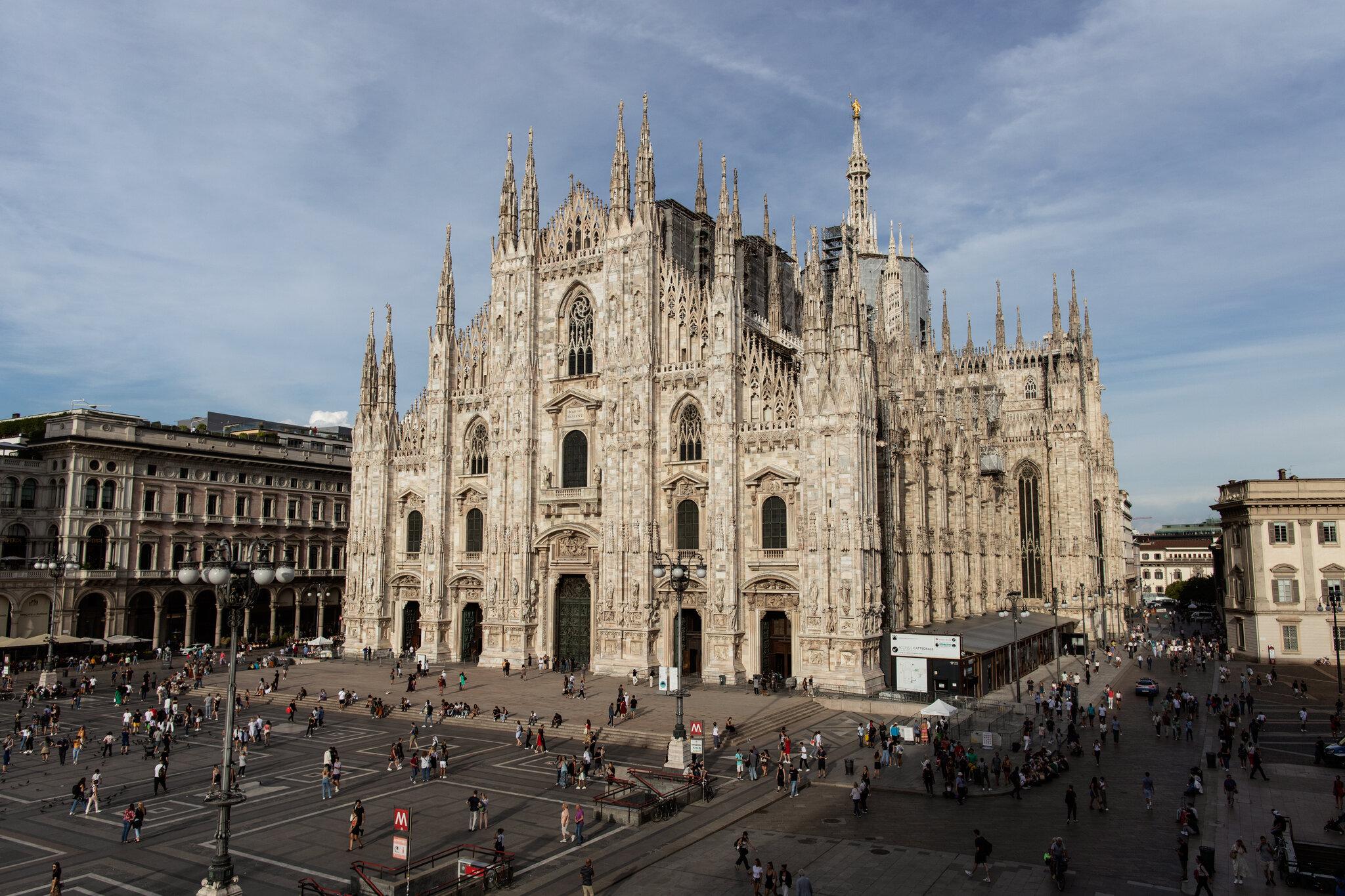
The Milan Cathedral is located in Italy, built between 1386 and 1965, has an interior area of 11,700 square meters, 157 metres in length and can hold more than 40,000 worshippers. This massive Gothic cathedral, formally known as the Cathedral Church of the Nativity of St. Mary, took nearly 600 years to complete.
Construction began in 1386 under the direction of Archbishop Antonio da Saluzzo, but the project suffered frequent interruptions due to a lack of funds as well as military conflicts. The final architectural details of the cathedral were not completed until 1965. The long period of construction has allowed a variety of architectural styles to be incorporated into the design, including Gothic, Renaissance and Neoclassical.
The cathedral was heavily influenced by the Gothic style thanks to the appointment of the Frenchman Nicolas de Bonaventure as the main architect in 1389. As a result, the Cathedral’s façade is made of pink and white marble, as is its top, which has an endless number of turrets and pinnacles and is topped with sculptures that look out over the city. The Madonnina, a figure created by Giuseppe Perego in 1774 and placed in the temple’s highest point, has served as Milan’s emblem since then. This remarkable undertaking produced a special piece of architecture that combines the traditional Lombard style with the global Gothic style.
No trip to Milan is complete without a visit to this magnificent masterpiece of human creative achievement.
Seville Cathedral
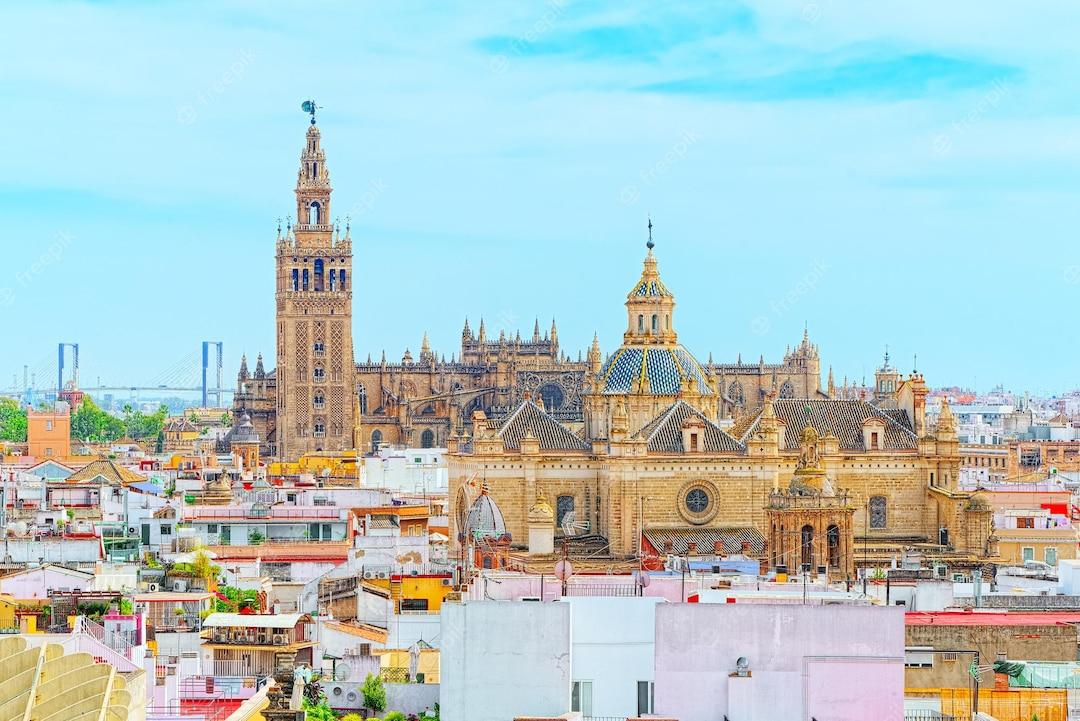
The Seville Cathedral, located in Spain, is the largest Gothic cathedral in the world. Construction began in 1401 and lasted until 1528. The cathedral’s interior covers 11,500 square meters, while its exterior covers 23,500 square meters.
Seville Cathedral is a Roman Catholic cathedral that was formerly known as the Almohad mosque and was constructed in 1172 as a mosque. It was used by Muslims as their place of prayer until Ferdinand III of Castile took Seville in 1248, at which point it was Christianized and required modifications to conform to Christian worship customs. The Grand Cathedral, which was intended to replace the mosque, started being built in 1401, and the building continued for more than a century.
Among all the churches in Spain, the Seville Cathedral is renowned for having the longest nave. With a spire rising to 105 meters, the huge interior measures about 135 meters in length, 100 meters in breadth, and 40 meters in height. Despite its size, Seville Cathedral’s interior, which features five aisles and 75 stained-glass windows from the 16th to the 19th century, is praised for its beauty, feeling of harmony, and regularity.
The cathedral was built in the Gothic architectural style, with ribbed vaults and pointed arches. The central nave rises to over 42 meters high, featuring enormous pillars decorated with gilt and polychrome stucco work. The cathedral also houses 80 chapels, the largest being the Chapel of St. Anthony.
The cathedral’s bell tower, the Giralda, is the cathedral’s most prominent feature at just over 104 meters high. Originally built as a minaret for a mosque, the Giralda was converted into a bell tower after the Reconquista. The renowned historical building is still standing today and is still being used as a Roman Catholic Church, having been listed as a World Heritage Site by UNESCO in 1987.
Mosque-Cathedral of Córdoba
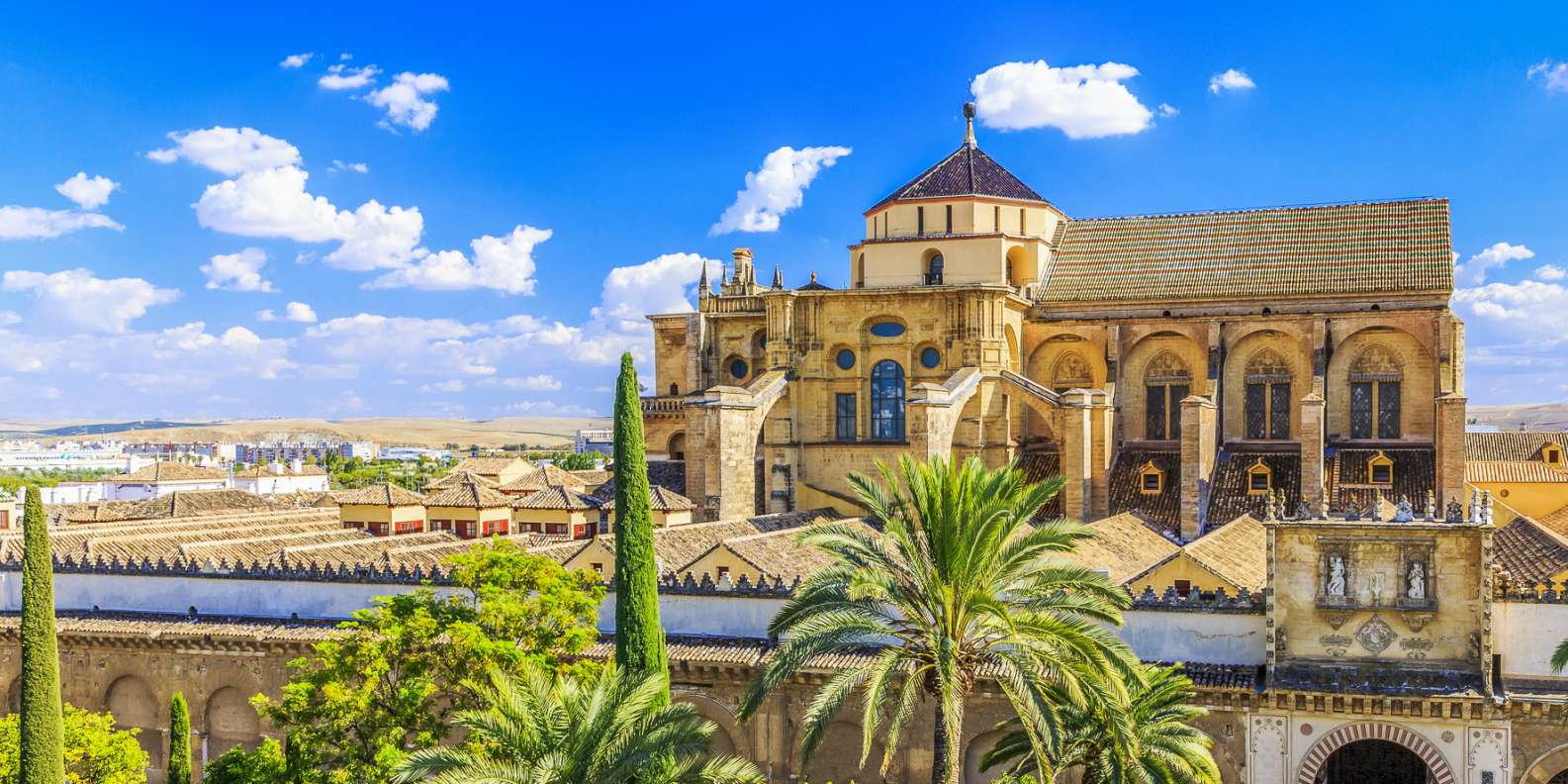
The Mosque-Cathedral of Córdoba, officially known by its ecclesiastical name, Cathedral of Our Lady of the Assumption in Spain, has a long and complex history. Originally built as a mosque starting in 785 AD, after the Christian conquest of Córdoba in 1236, the mosque was converted into a church. Successive rulers expanded the mosque over time, with the main construction done between 987 and 990 AD.
The mosque is most famous for its hypostyle hall with 856 columns of jasper, onyx, marble, and granite. The columns are topped with double arches, a feature unique to Córdoban architecture. The mosque also has striking horseshoe arches and decorative domes. Outside, the 20,000 square meter mosque complex has crenelated walls and battlements in the Puerta del Perdón.
Though now used as a church, the Mosque-Cathedral of Córdoba stands as an architectural wonder and reminder of Al-Andalus, the period of Muslim rule in Spain. A UNESCO World Heritage Site, millions of visitors each year come to experience this stunning example of Umayyad architecture, caught between its Islamic past and Christian present.
Cathedral of St. John the Divine
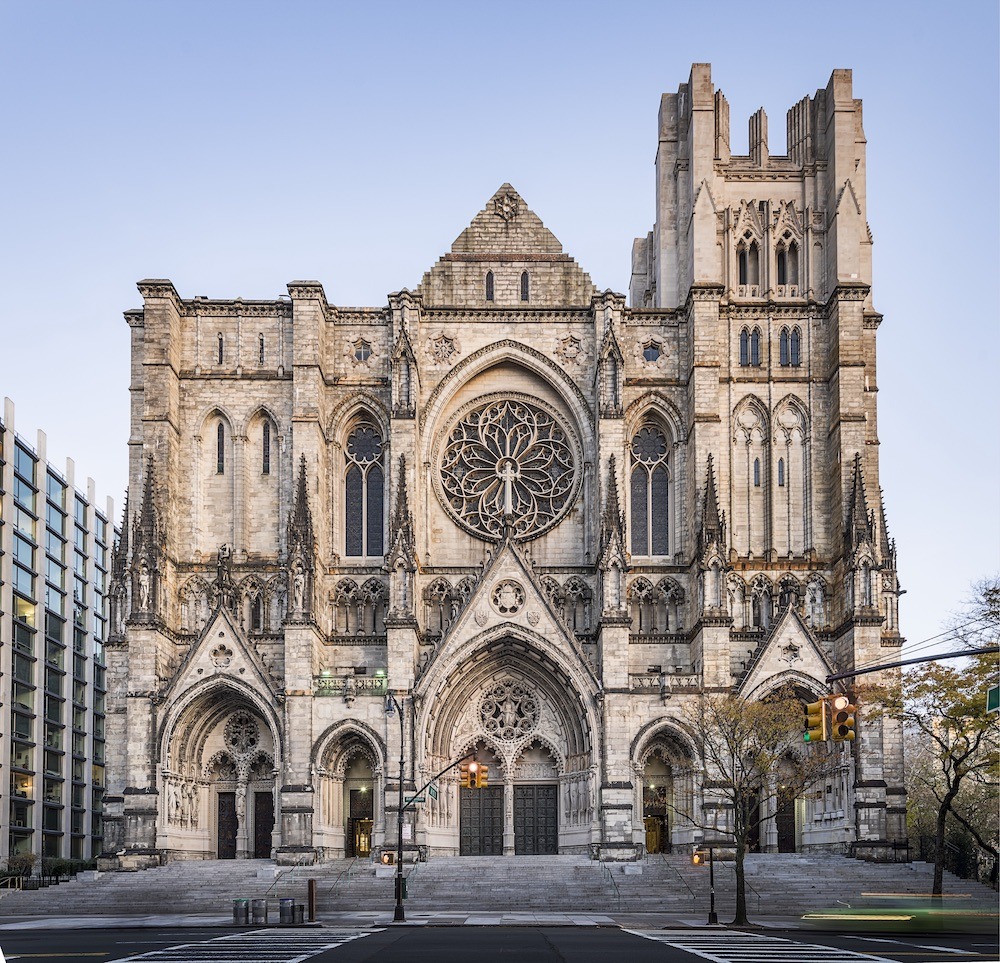
The cathedral of the Episcopal Diocese of New York is the Cathedral of St. John the Divine, often known as St. John’s and St. John the Unfinished. It is located at 1047 Amsterdam Avenue between West 110th Street (also known as Cathedral Parkway) and West 113th Street in Manhattan’s Morningside Heights district of New York City.
The Cathedral of St. John the Divine in New York City is one of the largest churches in the world. Although the cathedral was designed in 1888, construction began on 27th December 1892 but is still ongoing, with no completion date in sight. This Episcopal cathedral in Manhattan has seen many starts and stops over its 100+ year history.
At 121,000 square feet (11,200 m2), spanning a length of 601 feet (183 m), while the roof height of the nave is 177 feet (54 m). The cathedral’s interior alone is massive. The nave is over 600 feet long, making it the longest church nave on the planet. Despite its huge size, the cathedral’s Gothic-revival architecture has many intricate details with symbolic meaning. Over 10,000 people can fit in the cathedral for services and events.
After passing through the cathedral’s substantial bronze doors, you will notice the largest rose window in the United States, which is made up of 10,000 pieces of glass and gives the building stunning lighting. It is also important to notice one of its chapels, which honors all firefighters, particularly those who perished in the September 11 attacks.
Not only is the cathedral an architectural and religious landmark, but it also hosts cultural events, graduation ceremonies, and community outreach programs. A center of spiritual life in NYC, St. John the Divine embraces people of all faiths and backgrounds.
Basilica of Our Lady of Licheń
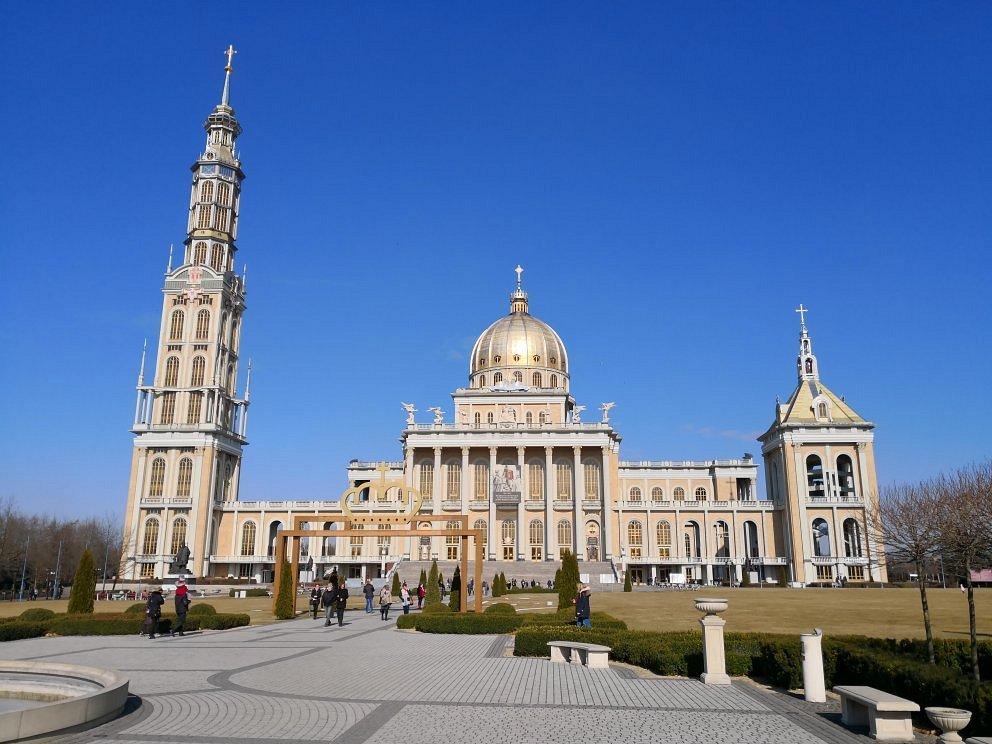
The Basilica of Our Lady of Licheń in Poland is the largest church in Poland and one of the largest churches in the world. Built between 1994 and 2004, this massive basilica covers an area of over 10,090 square meters. The basilica was designed by Barbara Bielecka.
The basilica was built in a neo-Gothic style, with two tall spires that reach up to 141 meters high. The basilica’s altar features a miraculous painting of the Virgin Mary and Child, known as Our Lady of Sorrows, Queen of Poland. This painting has been venerated in Licheń since the 14th century and attracts over 1.5 million pilgrims each year.
With its immense scale and beautiful Gothic architecture, the Basilica of Our Lady of Licheń is an impressive sight. A visit to this basilica, especially during one of its important religious festivals, is a moving experience for many.
Liverpool Cathedral
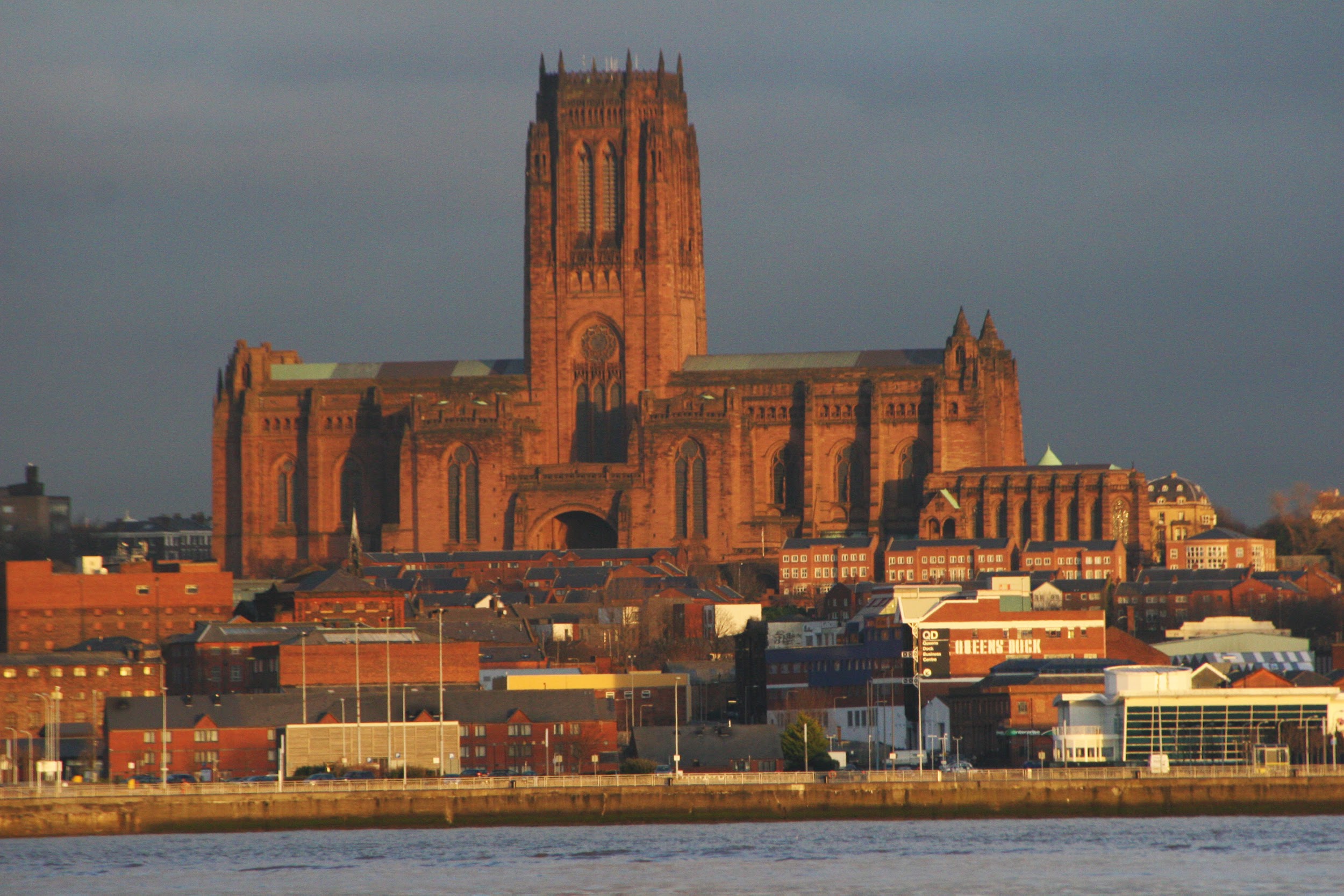
Liverpool Cathedral, located in the United Kingdom, is the largest cathedral in Britain and one of the largest in the world by area. Construction began in 1904 but took 74 years to complete, finally finished in 1978. The building was based on a design by Giles Gilbert Scott. The opening ceremony had Queen Elizabeth II in attendance. The cathedral’s massive interior spans 9,687 square meters with a capacity of over 9,500 worshippers.
The structure is the longest cathedral in the world, measuring a total of 207 yards (189 m) outside, including the Lady Chapel (dedicated to the Blessed Virgin), and 160 yards (150 m) inside. Liverpool Cathedral is the fifth-largest cathedral in the world by total volume and competes with the unfinished Cathedral of St. John the Divine in New York City to hold the record for the largest Anglican church structure. With a height of 331 feet (101 m), it is among the highest non-spired churches in the world and is the fourth-tallest building in Liverpool.
Built-in a mix of Gothic Revival and Modern architectural styles, Liverpool Cathedral features the tallest cathedral tower in the world at 101 meters high. The tower alone took over 30 years to construct due to delays from WWII. Two large organs, beautiful mosaics, art, and stained glass windows decorate the expansive interior. Guided tours provide access to the top of the cathedral tower with panoramic views of the city and beyond. The cathedral is registered as a Grade I listed building on the National Heritage List for England.
With a history spanning over 70 years, Liverpool Cathedral has been an integral part of the city and a place of worship for generations. Services are held daily with traditional Anglican prayers and hymns echoing through the cavernous space. The cathedral also hosts concerts, educational events and community outreach programs. A true architectural and cultural landmark, Liverpool Cathedral is a must-see when visiting the city.
Basilica of the Holy Trinity
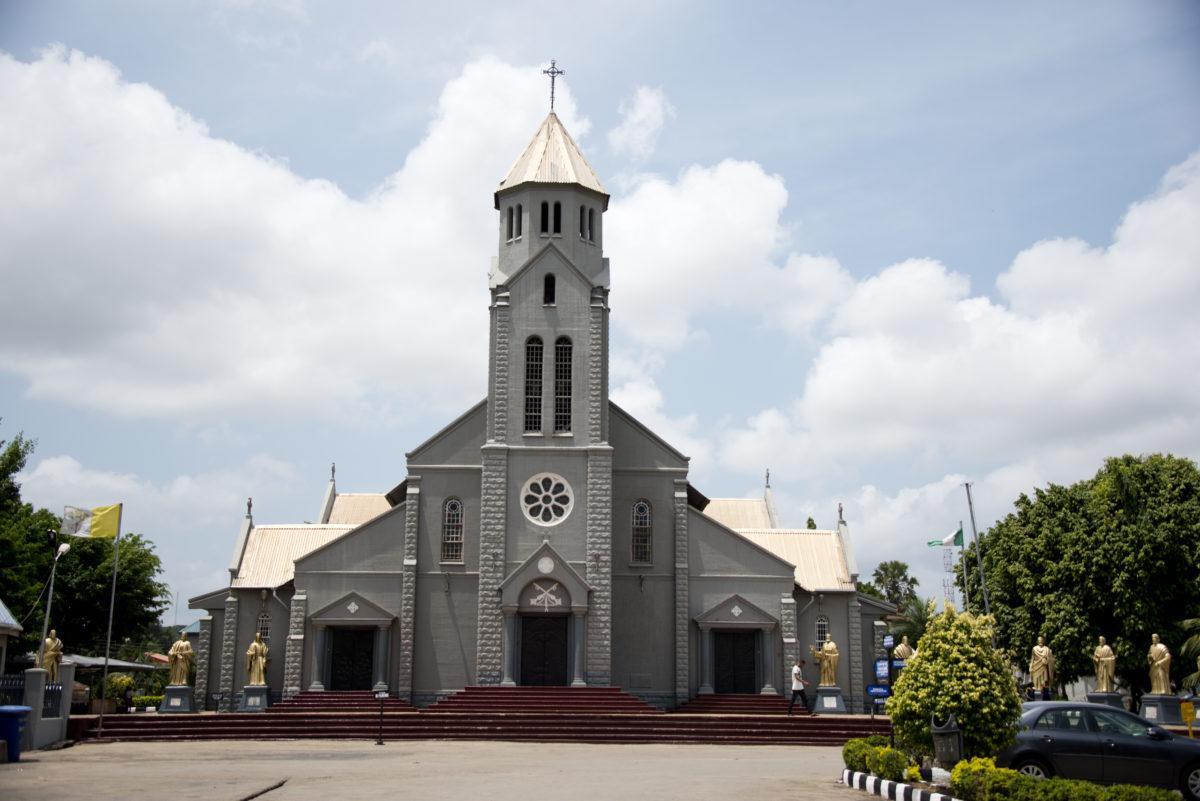
The Basilica of the Holy Trinity in Portugal is an ultra-modern church located in Fàtima. The construction began in 2004 and was completed in 2007; it has a massive interior space of 8,700 square meters and a capacity of over 9,000 worshippers.
Built to commemorate the centenary of the Marian apparitions in Fatima, the basilica’s architecture is meant to symbolize the Holy Trinity. Its central tower rises 65 meters high, representing God the Father. The two side chapels signify Jesus Christ and the Holy Spirit.
In the interior of the church, a corroded steel cross that is roughly 34 meters (112 feet) high and 17 meters (56 feet) wide was mounted at the time by German sculptor Robert Schad. The 8-meter (26-foot) lateral doors in bronze, dedicated to the twelve apostles of Christ, with text by Portuguese artist Francisco Providência, were installed, along with panels from the Rosary by Portuguese artist Pedro Calapez and a suspended sculpture by Cypriot artist Maria Loizidou, in the portico’s entrance. Kerry Joe Kelly, a Canadian artist, built stained glass panels with Bible verses in six languages, and an Irish artist created a bronze crucifix that hangs over the main altar.
The basilica’s innovative design includes an oval-shaped nave and a sloping roof supported by 12 concrete pillars. The open interior gives a sense of grandeur while allowing natural light to fill the space. At night, the basilica is a sight to behold when illuminated from within. The International Association for Bridge and Structural Engineering awarded it the Outstanding Structure Award in 2009.
Whether you’re religious or not, the Basilica of the Holy Trinity is an architectural and cultural wonder worth experiencing. Its monumental scale and symbolic details showcase a creative vision that pushed the boundaries of modern church design.
Basilica of Saint Paul Outside the Walls
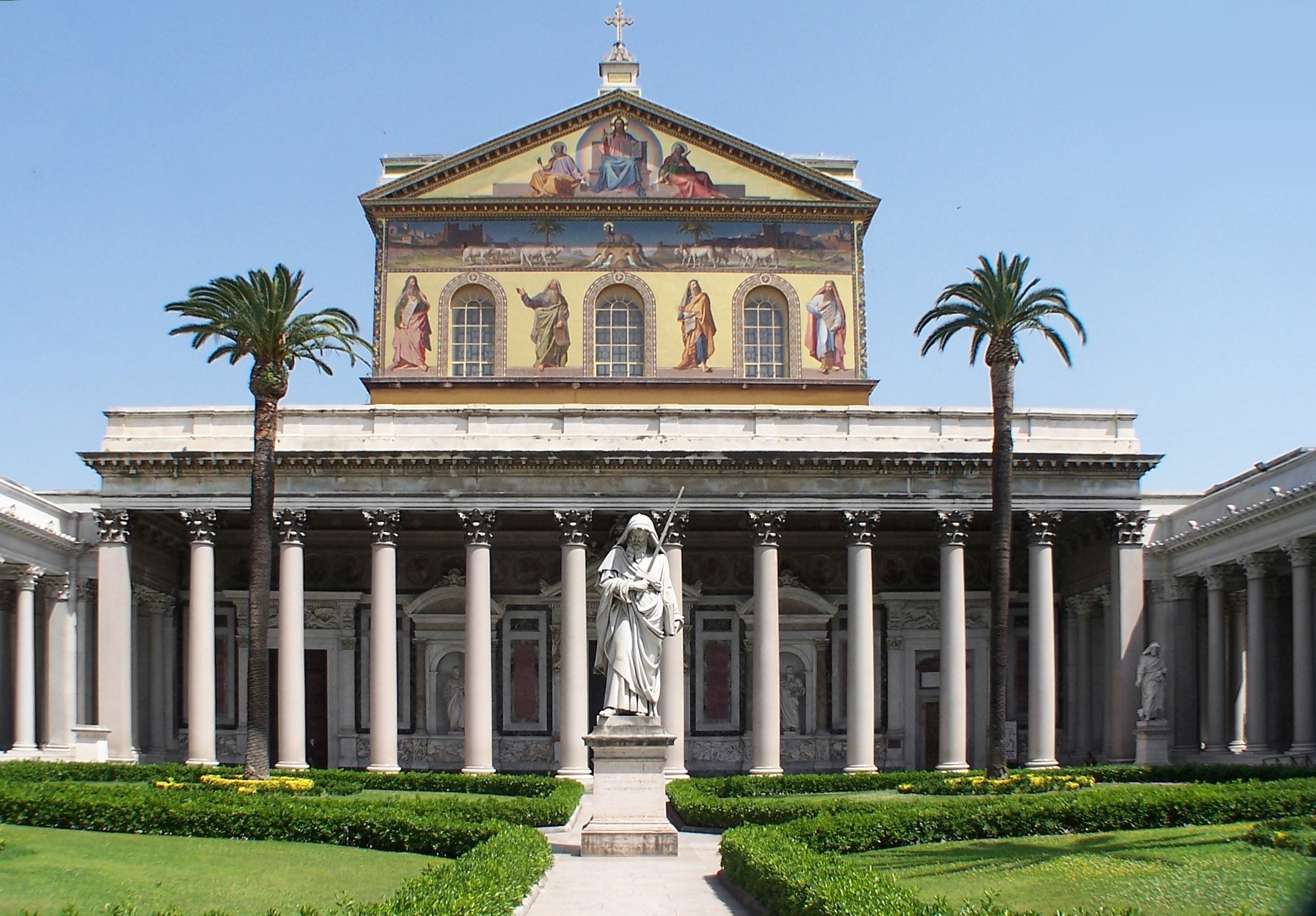
The Papal Basilica of Saint Paul Outside the Walls is one of Rome’s four ancient major basilicas. Originally built in the 4th century, it was almost completely destroyed by fire in 1823 and subsequently rebuilt. The current neoclassical structure was completed in 1840. It is the second largest church in Rome, being 131.66 meters (432.0 feet) long, 65 meters (213 feet) wide, and 29.70 meters (97.4 feet) high.
The basilica is built over the location where St. Paul was buried after his martyrdom. According to Christian tradition, after St. Paul was decapitated at Tre Fontane, his body was buried at the site of the basilica. Emperor Constantine, I erected a memorial, “Basilica Apostolorum”, on this site between 320 and 324.
The basilica includes an architectural mix of the original Christian basilica, a Romanesque cloister, and a modern abbey. The basilica interior is richly decorated with marble, stucco, mosaics, and artworks that make it an outstanding example of 19th-century architecture and art. Some parts of the original basilica, like the 5th-century mosaics in the triumphal arch and in the Chapel of the Crucifixion, still survive.
The abbey at the basilica is home to Benedictine monks who regularly pray in the basilica. The basilica is still an active place of worship and is the final resting place of many popes. Along with St. Peter’s Basilica, St. John Lateran Basilica, and St. Mary Major Basilica, St. Paul’s Outside the Walls is one of the four major basilicas of Rome.
Conclusion
You’ve seen pictures of some massive churches around the world, but until you see them in person, it’s hard to truly grasp their immense size and grandeur. While the largest churches may not appeal to everyone, you have to admire the ambition, artistry and engineering that went into constructing these architectural wonders.
Whether you’re drawn to their historical significance, artistic beauty or sheer enormity, the biggest churches around the globe are worth putting on your bucket list. Even if you’re not religious, these structures are sure to inspire a sense of awe at what humans can achieve when they dream big. So next time you’re planning a trip, consider stopping by one of these churches; you won’t regret witnessing their magnificence with your own eyes.


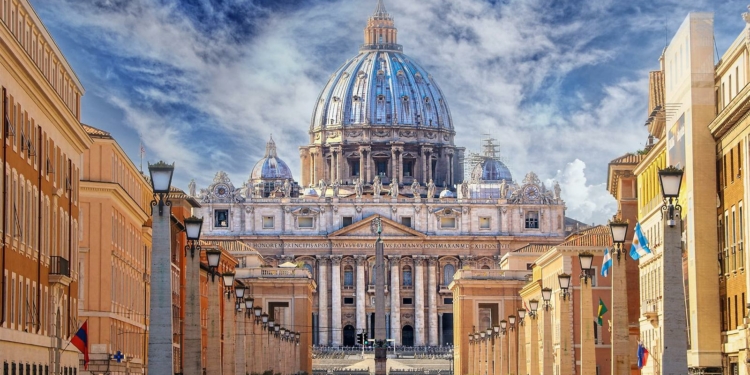






Discussion about this post